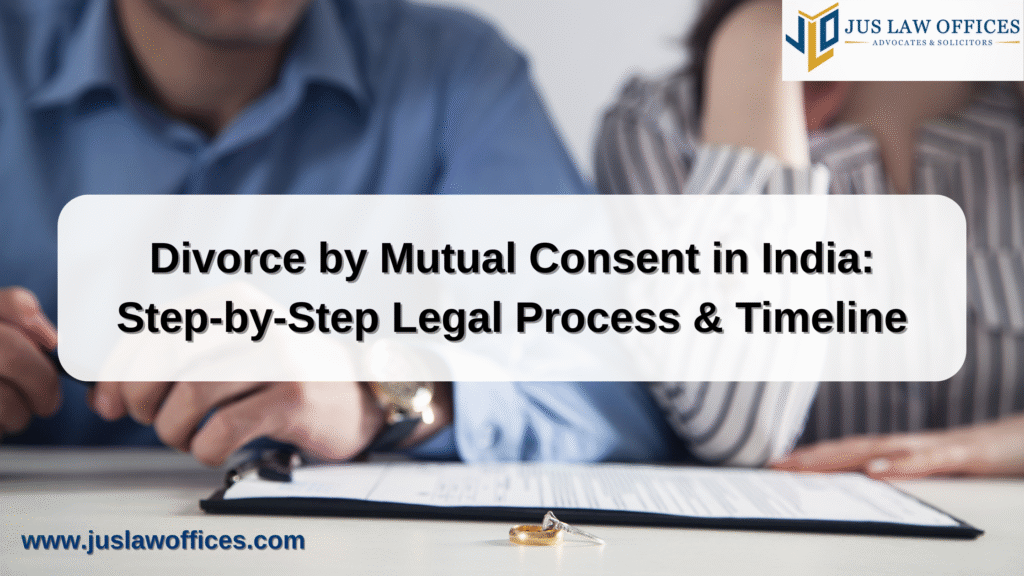
Amrita and Raj married in 2021 with high hopes of a lifelong partnership. Yet, over time, irreconcilable differences emerged. By early 2025, after months of counseling, they agreed that parting ways was best for both. Their journey to a mutual consent divorce highlights the legal path couples can take in India, clear, consensual, and governed by the Hindu Marriage Act, 1955, and the Special Marriage Act, 1954.
Legal Framework
1.1 Hindu Marriage Act, 1955
- Section 13B(1): Mutual consent divorce requires a joint petition, one year of marriage, and irretrievable breakdown.
- Section 13B(2): After the first motion, parties must wait at least six months before filing the second motion.
- Supreme Court Guidance (May 2025): In Amarjit Kaur v. Avtar Singh, the Court urged Parliament to reduce the six-month cooling-off to three months for genuine cases.
1.2 Special Marriage Act, 1954
- Section 28(1): Mirrors HMA’s mutual consent process for civil and interfaith marriages.
- Section 28(2): Same six-month interval between motions.
Step-by-Step Process & Timeline
| Step | Action | Timeline |
| 1. First Motion | Draft & file joint petition under Section 13B (HMA) or Section 28 (SMA) in Family Court. | Day 0 |
| 2. Court Admission | Court verifies jurisdiction, ensures one-year condition, and admits petition. | Within 2–4 weeks of filing |
| 3. First Hearing | Parties appear, confirm mutual consent, and record statements. | Within 1 month of admission |
| 4. Cooling-Off | Mandatory waiting—traditionally 6 months (Supreme Court recommends 3 months). | Months 1–6 (or 1–3 if amended) |
| 5. Second Motion | Both spouses file affidavit confirming continued consent and irretrievable breakdown. | Earliest Day 180 (or Day 90) |
| 6. Final Hearing | Court scrutinizes consents, settles ancillary issues (maintenance, children). | Within 1–2 months after 2nd motion |
| 7. Decree Granted | Court issues the final decree of divorce by mutual consent. | Typically by Month 7–8 (or Month 4) |
Key Judicial Pronouncements
- Supriya Aggarwal v. Preetam Singh (SC, Jan 2023): Court held no third-party evidence is needed if parties themselves testify to consent.
- Bengaluru HC (Mar 2024): Allowed a three-month cooling-off in exceptional cases, citing Supreme Court’s Amarjit Kaur directive.
- Kerala HC (Dec 2024): Emphasized courts must not coerce reconciliation once mutual consent is clear.

Conclusion
Divorce by mutual consent offers a dignified, streamlined path for couples like Amrita and Raj. By understanding the statutory steps—first and second motions, mandatory intervals, and recent judicial guidance—spouses can navigate the process with clarity and confidence.
FAQs
1. Can the six-month cooling-off period be waived entirely?
No—courts can reduce it (e.g., to 3 months) but not waive it, unless Parliament amends Section 13B.
2. What if one spouse becomes unwell during the cooling‐off?
They may apply to the court for an adjustment of the second motion date, citing medical grounds.
3. Are children’s welfare issues decided during mutual consent divorce?
Yes—courts may adjoin custody, visitation, and child maintenance hearings to the second motion.
4. Can I retract my petition during cooling-off?
Yes—either party can withdraw the mutual consent petition before the second motion.
5. How long after decree can I remarry?
Immediately—mutual consent divorce decrees have no statutory waiting period for remarriage.
Disclaimer: This article is for informational purposes only and does not constitute legal advice. Please consult a qualified family law practitioner for guidance tailored to your circumstances.

